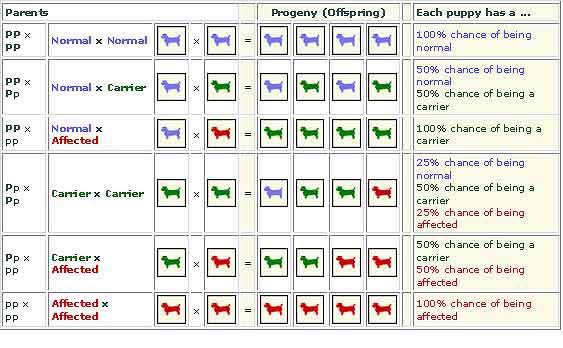Bolognese
Breed History
Bolognese belong to the Bichon family group, which includes the Bichon Frise, Maltese, Lowchen, Havanese and Coton de Tulear. Although there are some similarities the Bolognese are a distinctive breed in their own right.
The Bolognese is an ancient breed of noble origins, and has its roots with Italian Aristocracy. The Bolognese today is considered a rare breed in most countries of the world. Many historical and famous personalities have favoured the Bolognese, including Madame La Marquise Pompadour (1721-1764), Catherine the Great of Russia (1729-1796), Marie Therese Empress of Austria (1717-1780) and more recently Marilyn Monroe.

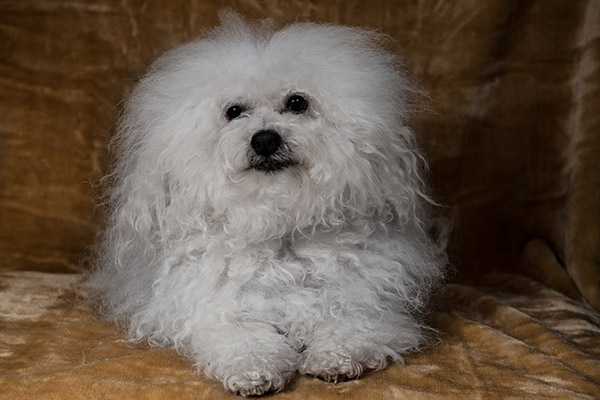
Breed Characteristics
An enchanting companion toy dog. Small, white, square and compact with a distinctive single coat: i.e. no undercoat, which falls in loose open ringlets all over the body and with shorter hair on the face. The texture is woolly as opposed to silky. It is never trimmed or clipped, is non-shedding but requires regular combing to prevent matting. The eyes are large and dark as is the nose. They are very intelligent and love the companionship of people but are quite reserved with strangers, and whilst not yappy, have acute hearing and will bark at strange noises. Their coat is non-shedding so should not affect low to mid allergy sufferers. Their most redeeming feature is that they have no known health disorders to date.
Bolognese bond well with animals and people, and are very gentle and patient with children. Providing, of course, they are well socialised from a puppy. They make a very good companion and family dog, happy to slot in to the family environment.
Breed Health
Fortunately the Bolognese is a relatively healthy breed with very few genetic health issues. They are robust, happy, healthy little dogs which have a very generous life expectancy of around 14-15 years. Bolognese are a small, rare breed and we want to do all we can within our club to protect it. Maintaining the good health of our breed is obviously a key part in this. We rely on reputable breeders breeding from healthy dogs to forward the well-being of our breed. In the main this is happening.
This extract is taken from ‘www.thekennelclub.org.uk‘ ‘You may be aware that some breeds of dog (and crossbreeds too) can be susceptible to inherited disease. Of course you want to be sure that the dog you choose is as healthy as possible and you would like to know that it has not inherited any undesirable disease-causing genes from its parents. There is some help in that DNA tests for diseases in purebred dogs are available for some conditions in some breeds, but there are not very many such tests just yet! There are also, however, a number of clinical veterinary screening schemes that dog breeders can use to increase the probability of producing healthy puppies.
Details of the various screening schemes, both veterinary and DNA, that are available to breeders in the UK can be found at www.thekennelclub.org.uk/doghealth
Potential dog owners should be aware that, at present, the application of various health screening results to breeding programmes is not always straightforward, and breeders may make choices for various reasons. A responsible breeder though, will always be willing to discuss relevant health issues with you. Breed clubs are often useful sources of breed-specific information.’
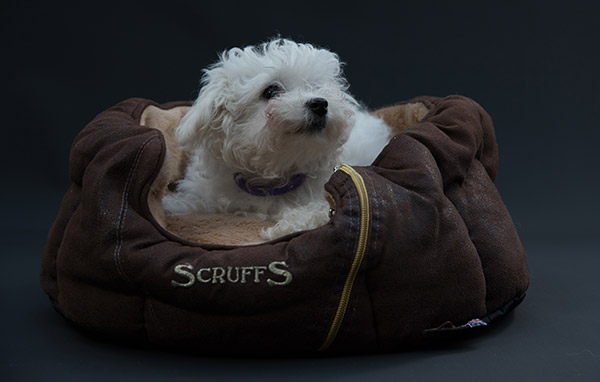
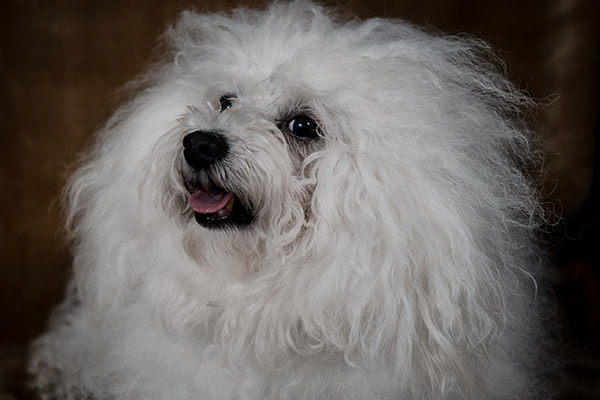
Health Screening within the Bolognese
Patella luxation can be a problem is many small breeds and is present within the Bolognese, fortunately not too big a problem as yet. The Club recommends that breeders of Bolognese have their dogs and bitches, particularly those used for breeding and their progeny, regularly patella checked by their vets. Many breeders are being issued with patella certificates by their vets indicating that their dogs are free form any patella issues. The Club recommends that prospective Bolognese owners ask the breeder of a puppy they may be interested in if they have these kind of patella checks regularly carried out and ask to see the evidence. This is not a Kennel Club directive but something the club feels is important and something the breeder should be doing. If you have any further questions on this please contact us.
PRA – prcd in Bolognese
In recent weeks there has been a lot of speculation on social media regarding an eye condition, PRA-prcd.
At the recent Annual General Meeting of the British Bolognese Club, a report was given by Jane Owen (committee member) who has researched the position at present as we know it.
We have posted a copy of her report below in order that the facts will help dispel any misinformation that could evolve from reports on Facebook and the like.PRA is a degenerative condition of the eye and we are aware that its more serious form PRA-prcd is being researched overseas by the Italian Kennel Club, the Lazzaro Spallanzani Institute (Italy) and the Uppsala University in Sweden.
In the United Kingdom, there is a test for PRA carried out by the British Veterinary Association in conjunction with the Kennel Club and International Sheep Dog Society (BVA/KC/ISDS) Eye Scheme. This test will only detect PRA after it has started to develop.
To date, as far as we are aware, no cases of PRA-prcd currently exist in the United Kingdom.
As of 31 March 2017 Optigen’s PRA-prcd test is now available to be carried out on Bolognese.
Within the report on this subject for your information is the process that is required to be able to carry out the test that needs to be sent to Optigen (based in the USA).It has been advised that the test only needs to be carried out on breeding stock.
We suggest that you contact your veterinary surgeon for any further information.
PRA in Bolognese – report by Jane Owen (hard copy available on request email us at info@britishbologneseclub.co.uk)
Recently there has been some discussion on social media about an inherited eye condition called PRA affecting the breed and this paper sets out the basic information currently available.
What is PRA?
PRA stands for “progressive retinal atrophy” and is a generic term for a range of inherited retinal diseases affecting the eyes in many breeds of dog. PRA involves the retinal photoreceptors and two major types are recognised—developmental (dystrophies) and degenerative.
The developmental types affect puppies and very young dogs. The degenerative disorders tend to show after the dog reaches maturity. Owners usually notice a loss of night vision, especially when the dog is in unfamiliar surroundings. The condition progresses to produce a loss of vision under all lighting conditions and there is a poor pupillary light reflex with dilated pupils.
As the type(s) of PRA that it is thought may affect Bolognese may not develop until the dog is 4 or 5 years old, a dog may have produced litters before it is known that the condition is present.
Most types of PRA are autosomal recessive traits (see diagram below) but, less commonly, autosomal dominant and X-linked types of PRA have also been reported in some breeds.
There is currently no effective treatment for these conditions.
Testing for PRA in Bolognese
There is a British Veterinary Association/Kennel Club/International Sheep Dog Society (BVA/ KC/ISDS) Eye Scheme which aims to ensure that there is no clinical evidence of hereditary eye disease in dogs that are to be used for breeding. Following examination of the eye a Certificate of Eye Examination is issued which records the inherited eye disease status as either ‘clinically unaffected’ or ‘clinically affected’ in the bottom section of the certificate. It must be noted that this test can only detect PRA after it has started to develop – it does not detect dogs that are carriers of the gene that may cause PRA and that could be passed on to its offspring.
As of March 31st 2017 Optigen offer a DNA test for PRCD-PRA in Bolognese. PRCD-PRA is progressive rod cone degenerative form of PRA which is one type of PRA that has been diagnosed although it is possible that more than one type of PRA could affect the breed.
If there is more than one type of PRA present in the breed, it would mean that even the newly available DNA testing cannot always predict whether a dog will be affected by PRA, and it is also impossible to find all carriers of the condition in order to prevent the possibility of passing on the condition to offspring. The best course of action at present would be to use both DNA testing and eye examination for all breeding dogs.
Some additional research at Uppsala University in Sweden is being done in relation to PRA in Bolognese and recently some funding has been granted to carry out studies at Lazzaro Spallanzani scientific institute in Italy. These studies require blood samples from affected Bolognese, as well as samples of related Bolognese (e.g. siblings or offspring) that are healthy together with eye examination results, pedigree and confirmation of identity (e.g. via microchip) from a veterinarian. Also Optigen will continue to carry out research using samples submitted and state they will carry out DNA testing of confirmed cases of PRA free of charge (see their website for details).
(Reference: Hereditary Eye Disease in Dogs by the British Veterinary Association March 2016 https://www.bva.co.uk/uploadedFiles/Content/Canine_Health_Schemes/20160321%20CHS%20Eye%20leaflet%202016%20v8A.pdf )
Testing information
Jane Towers has researched how to get the Prcd-PRA Test licenced/patented by Optigen in USA done:
Animal DNA Diagnostics – Cambridge will process the swabs and send to Optigen for testing (listed on Optigen website). I have spoken with Animal DNA Diagnostics and they would provide the saliva swab testing kits for £5.00 each, or for £3.00 per dog if we were to take 10 or more.
The DNA test is then ordered with Optigen (they accept credit cards). There is a form to complete and this is then sent along with the test to Animal DNA Diagnostics. For a fee of £10 per batch (not per test) they will extract the DNA and ensure there is enough for testing before sending to Optigen. They will also email you when the samples have arrived and have shipped to Optigen. Optigen will email results directly to owner. The process takes approx. 3 weeks. Alternatively you can send your samples directly to Optigen.
There is currently a special rate of $75 per test rather than $130 listed on the website and having looked further there is a discount structure for breeders and clubs which gives a discount of 20% with a further discount of 5% for ordering online. The special introductory price is available until the end of the month – orders need to be made online or post marked by the end of May for this pricing to be accepted.
One of the requirements of the form is that it is witnessed. I have spoken with my vet this morning who was happy to complete the form and ensure the swab is done correctly for the price of a follow up consultancy fee. I had asked them yesterday if he could look for me and which route I should take. He confirmed this was the desired solution and I use the UK partner lab listed on Optigen site, although there are other labs
This works out around £62 per dog if you don’t have vet witness and Animal DNA Diagnostics handling. Obviously there is no requirement for a vet visit and all vets charge differently.
Virginia Dowty has provided information about an alternative process for getting the DNA test done with VHL Genetics in the Netherlands:
The website is https://www.vhlgenetics.com/en-us/ourservices/dnatests.aspx
Go to the big blue banner at the top of the page click on Webshop then click Dog. Scroll down the right hand side you will see lots of tests here in blue print, to where it says H704 prcd PRA (partnerlab). You do have the option of the Optigen test as well, but this partnerlab test is the same and a lot cheaper. The company are very helpful and speak English so if any queries best to phone them.
There is information on the VHL website to explain what they mean by “partnerlab”, as follows:
This test is patented in certain countries. We offer our clients two options for this test because we are not allowed to perform the test in our laboratory.
Firstly, the test can be ordered through a licensee of the patent owner. As a second option, the test can be forwarded to a partner laboratory in non-patented territory.
Between these two options, a price difference is in place which is caused by the royalties costs on the test. The tests performed by both labs are technical identical.
A Breed Standard is the guideline which describes the ideal characteristics, temperament and appearance including the correct colour of a breed and ensures that the breed is fit for function. Absolute soundness is essential. Breeders and judges should at all times be careful to avoid obvious conditions or exaggerations which would be detrimental in any way to the health, welfare or soundness of this breed. From time to time certain conditions or exaggerations may be considered to have the potential to affect dogs in some breeds adversely, and judges and breeders are requested to refer to the Breed Watch section of the Kennel Club website here http://www.thekennelclub.org.uk/services/public/breed/watch for details of any such current issues. If a feature or quality is desirable it should only be present in the right measure. However if a dog possesses a feature, characteristic or colour described as undesirable or highly undesirable it is strongly recommended that it should not be rewarded in the show ring.
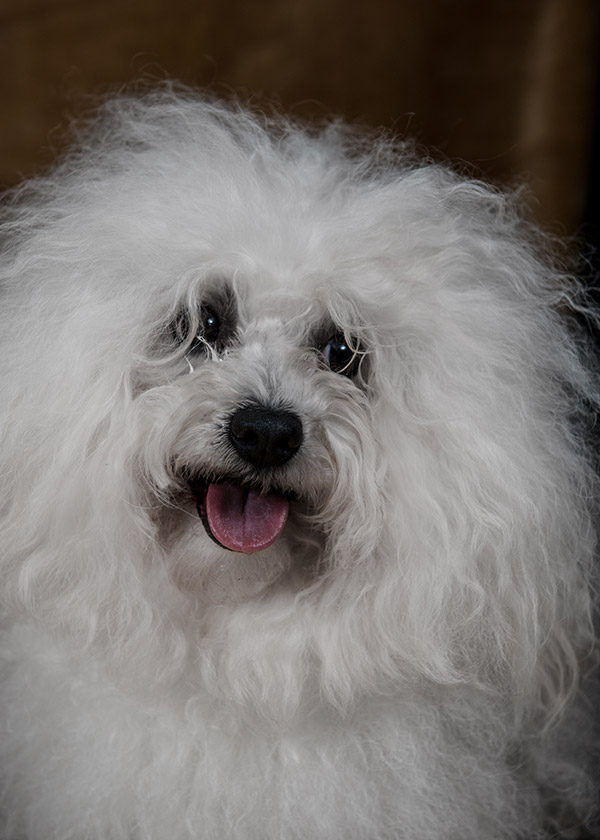
You may find the newly published book ‘Bolognese – a comprehensive owners guide’ useful. Written by Wolfgang Knorr. It contains interesting facts and information on the history of the breed and on how to look after your Bolognese. Copies can be purchased via http://www.amazon.co.uk or contact us for further details.
Breed Standard
General Appearance: Small white Toy dog with square, compact outline and distinctive coat.
Characteristics: Intelligent, companionable.
Temperament: Friendly but reserved with strangers.
Head and Skull: Wide flat skull. Nose to stop slightly shorter than from stop to occiput. Accentuated stop. Nose large, black.
Eyes: Large, round, dark with well pigmented rims.
Ears: Set on high, long, pendulous, carried away from head giving a broad appearance to head.
Mouth: Jaws level, with perfect, regular scissor bite, i.e. upper teeth closely overlapping lower teeth and set square to the jaws.
Neck: Clean, medium length.
Forequarters: Shoulders well laid, legs straight with slightly sloping pasterns. Elbows close to body.
Body: Well sprung ribs, brisket reaching to elbows making half overall height at withers. Level back, loins slightly arched. Point of shoulder to point of buttock equals height at withers.
Hindquarters: Well muscled, moderate turn of stifle, hocks well let down.
Feet: Oval, black nails and pads.
Tail: Set on at level of croup carried curved over back. Well feathered.
Gait/Movement: Normal and smart. Legs moving parallel. Ambling highly undesirable.
Coat: Long, flocked without curl covering entire head and body. Shown in natural state.
Colour: Pure white without markings, not even simple shadings. Lips, eyelids, nose and nails black.
Size: Dogs 27-30.5 cms (101/2-12 ins). Bitches 25.5-28 cms (10-11 ins).
Faults: Any departure from the foregoing points should be considered a fault and the seriousness with which the fault should be regarded should be in exact proportion to its degree and its effect upon the health and welfare of the dog and on the dog’s ability to perform its traditional work.
Note: Male animals should have two apparently normal testicles fully descended into the scrotum.
– See more here
Bolognese Puppies
The Bolognese are a rare breed but puppies are occasionally available from reputable breeders to responsible homes. You may experience a short delay in finding a puppy, but they are always worth the wait! We hope the following advice will be useful when choosing a Bolognese puppy.

Any member of the Bolognese Club committee can provide information on reputable breeders. Or please contact Ms Adele Summers, our club secretary, at adelesummers1@gmail.com for an up to date puppy availability list.
Before entering into any agreement perhaps check the following points:
⦁ Are they a member of the British Bolognese Club?
⦁ How long have they been breeding? However a breeder claiming many years experience does not necessarily mean they are producing healthier dogs.
⦁ A dog consistently in the show ring is also no guarantee of a healthier dog. The key is health and the breeder should be questioned on this regarding the sire/dam and the puppies. Best to visit the puppies in the home environment and make your own judgement.
⦁ If you are not sure what to ask contact the club for advice.
The average price for a well bred puppy is upwards of £1000 and normally includes:
⦁ Kennel Club Registration. However this is no guarantee of a well-bred dog. Anybody with the correct paperwork can register a litter. The Kennel Club do not have the facilities to check every litter registered and anybody who pays the fee can sell a registered litter of puppies on the Kennel Club site. Breeders do have to adhere to stricter rules if a member of the kennel Club assured breeder scheme. See below for further information on this scheme.
⦁ Had at least 1 vaccination and vet check
⦁ Microchipped and or DNA profiled
⦁ Have an Insurance policy in place
⦁ Be provided with an information sheet on the care of the puppy, feeding instructions and a supply of food for the first few days if required.
⦁ Facility to take puppy back if conditions change.
Bolognese are not required by the Kennel Club to have any specific health screening tests, however slipping patellas can be a problem in many small breeds and can be present in the Bolognese too. The Club recommends that breeders regularly test for patella problems. Any responsible breeder should be doing this. Ask to see documentation from their vet if at all concerned.
If you are a breeder, we can send you a patella certificate template for your vet to complete.
Kennel Club Assured Breeders Scheme – Kennel Club Assured Breeders sign up to follow recommended breeding guidelines. They make use of health screening schemes, if applicable (not currently with the Bolognese) which will help owners to predict the future health of their puppy. They will ensure the puppy is seen with its mother and siblings, to give an indication of how the puppy is likely to develop. Any responsible dog breeder should be prepared to answer your questions about the breed. They will also give new owners written information regarding the socialisation, training and dietary requirements of the puppy and will be there as a point of contact throughout the puppy’s life to ensure that the dog and owner have a happy and fulfilling relationship. If a breeder doesn’t follow these guidelines and if the puppies do not appear happy and are not kept in good conditions, then look elsewhere. Information on the Assured Breeders Scheme can be found on the Kennel Club website here. A list of Bolognese Assured breeders can be found here. However it must be stressed that many excellent breeders are not Assured breeders. Best to visit the puppy in the home environment and make your own judgment.
Read this article on the Kennel Club site for more information on buying a dog.
Puppy Enquiries
If you have decided that a Bolognese is the breed for you, and would like details of reputable breeders who are members of the British Bolognese Club and have signed up to the Club’s code of ethics, please contact the secretary Adele Summers who has details of litters currently available. Contact us or email. adelesummers1@gmail.com. The kennel Club website http://www.thekennelclub.org.uk is also a good source of information.
Please note, this is only an introduction and the British Bolognese Club do not accept any responsibility for a sale or agreement between the purchaser and vendor.
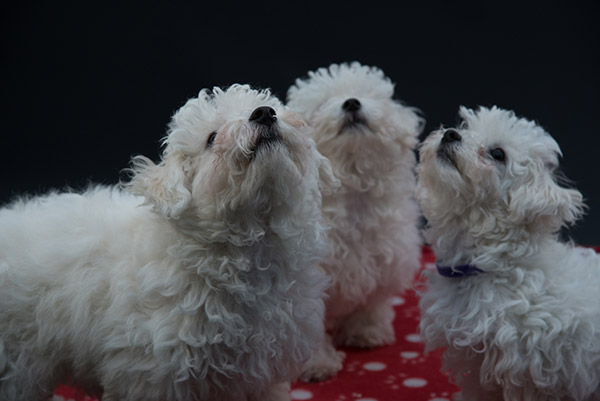
Homecare and Grooming for your Bolognese
Compiled by Greta Franklin
Waiting For A Bath
The following equipment is required:
⦁ Toothbrush and toothpaste
⦁ Cotton wool buds
⦁ Thornit powder
⦁ Metal handle very wide teeth comb (small)
⦁ Oster grooming comb with handle Great for removing tangles and dead coat. Rounded teeth prevent irritation These are solid steel combs are strong, durable and easy to disinfect.
⦁ Metal forceps. Serrated jaws with lock.
⦁ Scissors
⦁ Nail clippers
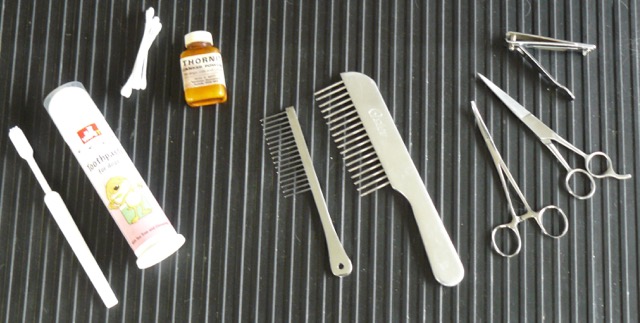
Grooming
It is necessary to accustom your Bolognese to the grooming routine when still a puppy. A young dog that becomes accustomed to the caring hands of a human will remain easy to handle and willing throughout his life. Who would want every grooming session with their dog not to be a struggle, even if the dog is small. Put your Bolognese onto a grooming surface, preferably a grooming table and give him the command “stand”. A dog that is nervous on the grooming table sits down over and over again, fidgets about continuously or simply does not do what he is supposed to do is no fun to groom. You need calm and obedient behaviour from your Bolognese during grooming sessions. You have to be careful to prevent your dog from jumping or falling of the table as it would be easy to injure from such a fall. If grooming is done regularly your dog learns to accept grooming and will relax and go to sleep and it becomes a pleasure for both of you.
Care Of The Ears
In order to keep the ears clean and prevent inflammation, you must pluck the hair growing inside the ears at regular intervals. This aids in preventing the ears from being clogged up with wax. Cleaning the ears must never be attempted with cotton swabs since this may actually push dirt deeper into the auditory canal. Pet shops and vets offer liquid ear cleaning solutions, which can be applied by putting a few drops into the ear and massaging the ear so that the deposits of ear wax and dirt are loosened. The outer part of the ear is then carefully wiped clean with cotton wool. If your Bolognese shakes his head frequently or scratches at his ears you should take him to the vet. When the cleaning regime of the ears is complete, to prevent your dog getting ear mites “Thornet – Canker Powder” can be put in both ears using a cotton wool bud.
Care Of The Teeth
Some maintenance is required in order to keep the teeth healthy. Deposits of calcium salts contained in the saliva, in conjunction with food particles may show as brown deposits at the bases of the teeth, commonly known as “tartar”. This appears to be particularly common in young as well as older dogs. Bleeding and inflamed gums can lead to tooth loss and bad breath. Regular brushing of the teeth is important and toothbrushes and toothpaste for dogs are readily available. Resistant tartar can only be removed by a vet who will use ultra-sonic technology.

After The Bath
Dolly now finished and ready to have her photograph taken in the garden. She was very cooperative throughout the whole procedure as was my son Gareth took all the photographs in this presentation folder.

Matts and Tangles
The Bolognese needs to be thoroughly combed and brushed before bathing. Regular brushing and combing are necessary to prevent the coat from matting. Matts and tangles may form very quickly if left unattended for just a few days, they will be impossible to eliminate with simple combing or brushing. Removing matts is very painful for the dog, and the torn out hair will hardly grow back. Regular care is therefore more preferable. If matts do form, scissors are not necessarily the only option. The affected patches of coat can be soaked with a conditioning lotion and the matts/knots carefully plucked apart with your fingers. Care has to be taken to reach all parts of the body in order to prevent matts/knots from forming and spoiling the coat. Comb through with a metal comb specifically designed for matt prevention by working in layers from the belly upwards, first on one side and then the other. Then comb the tail from the tip to the tail. Combing is done from the tips of the hair to the body, otherwise too much of the precious covering coat will be lost and your Bolognese will look like a plucked chicken. Once the work on the body has been completed the dog is made to sit facing you so you can attend to the beard and head. Extra care must be taken around the eyes.

Care Of The Feet
The length of your Bolognese’s toe nails should be checked on a regular basis. Since your Bolognese is light on his feet, his nails are not worn down to a proper length through walking. As a rule the nails should be level with the outline of the paw. They must never be clipped right from the front, but rather from beneath towards the pad. In the case of light coloured nails, it is relatively easy to determine where the “quick” (the vein that runs through each nail) ends, but this is not so obvious in the case of dark coloured nails. Clipping dark nails requires a very careful approach to avoid cutting into the quick which would be very painful to the dog and result in bleeding. Just in case, you should have some “Trimmex” which stops the bleeding. If you are worried about using nail clippers you could use a file or electric nail grinder. The fifth claw (dew claw) on the forefeet must not be overlooked; if neglected it might eventually grow inward and cut into the leg. If the dog has very brittle, hard nails, trim the nails after a bath. Trim with care all the hair between the pads.
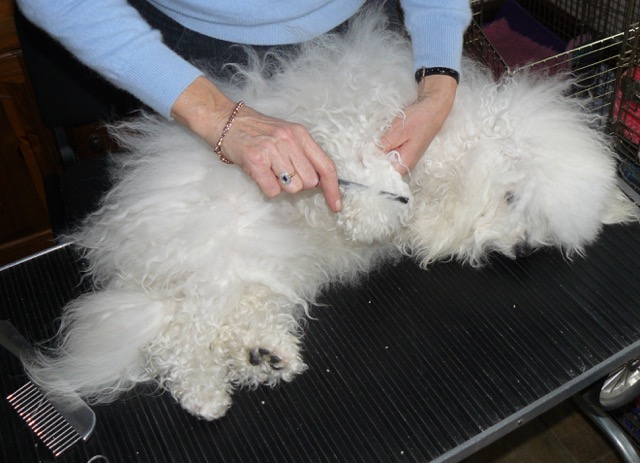
Bath Time
Despite his white coat, bathing your Bolognese is actually only necessary if he is very dirty or in preparation for a show. Bathing too frequently can have negative effects on the skin and the coat, removing natural oils and causing dryness. Most dogs don’t naturally enjoy their bath but you at least want yours to cooperate with you. Before bathing the dog, have the items you’ll need within reach so you don’t have to leave the dog unattended. First decide where you will bath the dog. Care should be taken that the surfaces are non-slip.
Wet the coat thoroughly using a shower spray, a hose or a jug. Dilute the shampoo using only shampoo designed for dogs. Human shampoos are too harsh for dog coats and will dry them out. Begin bathing by wetting the coat all the way down to the skin. Massage in the shampoo, keeping it away from his face and eyes. Rinse him thoroughly, again avoiding the eyes and ears, as you don’t want to get water in the ear canals. A thorough rinsing is important as shampoo residue is drying and itchy to the dogs. After rinsing, wrap him in a towel to absorb the initial moisture. A high quality hair dryer with temperature control helps to prevent the hair from breaking and splitting. Use a warm setting.
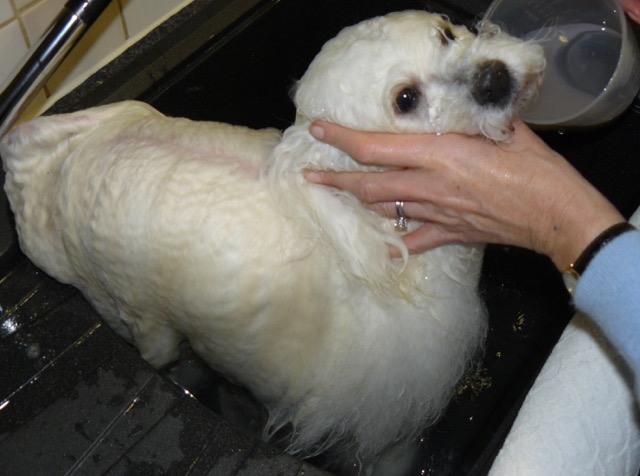
Tear Staining
Tear staining is not specific to the Bolognese breed. It occurs in most breeds. However because the Bolognese are white dogs the staining is much more easily noticeable.
There are medical causes of tear staining but when these are ruled out then we have to deal with the staining as best we can.
Many vets, once any medical causes are ruled out, in my experience are equally at a loss as too the real cause.
I have found that when a Bolognese has tear stains it is much worse after they have been outside. The stains darken when exposed to sunlight.
There are many things written about tear stains and also there are hundreds of products on the market for such stains. I have not come across one particular product that clears the staining.
I can only write and say how I manage tear staining.
For seven years I have been relatively stain free but two of my Bolognese did start with staining early summer. It took me around 3 months to get the two of them stain free.
My Regime
First thing in the morning I bathe all my dogs’ eyes with cool boiled water with a clean flannel and towel. Then I put a drop of Jean Peau eye care in each of their eyes. If staining is pretty bad then I add the drops to the eyes up to and including 6 times a day. When I feel the staining is improving I slowly cut the drops down until I am putting them in once daily. It is surprising how much dirt comes out of the eyes when you first start using the eye care. After staining has cleared then I will add the eye care for another 6 weeks unless it seems to be making a return.
In addition I wash all their faces every day with a pet facial wash or scrub. This not only helps with the staining but removes any dirt or food particles that get deep into the hair around the mouth.


Good Practice
Feed your dog in a stainless steel, porcelain or glass bowl. Do not use plastic because this can harbour bacteria. Wash the dog bowls in a dishwasher or wash with soap liquid and then pour boiling water into the dogs bowl to sterilise.
Do not free feed your dog i.e. having food in a bowl all day long. You should not leave dog food in a bowl for more than 30 minutes. Throw away what is left.
Water can be left down all day but the bowl must be washed and sterilised every day.
Tap water is fine for your dog providing there is no fluoride in it which is too toxic for pets. If you are unsure then give Bottled water.
If the staining is very excessive then try milk thistle (tablets – Dorwest Herbs) as this herb is a natural detoxifier and aids the liver to eliminate too many toxins.
If the stains around the eyes are becoming a little sore then try using a dab of coconut oil on the ‘wet streaks’ which form below the eye area close to the nose. This helps to prevent the skin from becoming irritated and inflamed.
I have also used colloidal silver on the stains. I dab the liquid on a little cotton wool and gently wipe around the stain. Colloidal silver has antimicrobial properties and this can help reduce moist dermatitis that can occur in the corners of the dog’s eye.
Most Important
After returning from a walk with your dog, ensure you wash his paws. We use Warren London Paw sani-scrub which is Antimicrobial. Incidentally this can be used to sanitise the rectal area after bowel movement. You can also use a mild shampoo or cooled boil water. Then pat dry with a clean towel.
All towels and flannels put in the tub on 90 degree wash or use a detergent that kills bacteria on a cooler temperature.
Clean dogs’ beds regularly. I wash the bedding on 40 degree but apart from using detergent I put a drop of Dog Disinfectant by Cromessol into the washer. This ensures all bacteria are eliminated as it includes a powerful bactericide.
All combs, brushes, etc. should be washed in an approved pet disinfectant.
Also, bathe your Bolognese at least every 3 weeks.
Thanks to Shirley Hewitson of Moorhey Bolognese
Training Your Bolognese
Most of the things you would find helpful training any dog will be useful for training your Bolognese and there is a list below of some resources that I particularly like. However…
There do seem to be some common traits in the breed that are worth a mention:
⦁ Bolognese are often quite eager to please and really seem to love being centre of attention. A dog that has figured out that he can get your attention by doing things that you like is going to be much easier to train than one that gets ignored until he does something naughty! Any sort of attention is better than no attention at all.
⦁ They are MUCH more intelligent than you may realise. They seem to have a real knack of being two steps ahead of you.
⦁ They do like an easy life, so are more prepared to compromise than your average dog. They are not a particularly stubborn breed – so as long as you can manage not to be pig-headed about things too, you’ll have a dog that’s easy to live with.
⦁ Many Bolognese are not the slightest bit food motivated, and may not be too fussed about playing with toys either. If you can work out a way of becoming the most interesting thing on the planet to that Bolognese, then training will be a breeze.
⦁ Yes, they are cute and fluffy – but that’s no excuse for bad manners, so getting the ground rules worked out will help to make sure everyone stays happy and relaxed.

Going To Classes
Whether they are puppy socialising or Good Citizen classes, or something more specialised such as ringcraft, obedience or agility, classes can be a great opportunity to socialise and get support from trainers and other doggy people. However, it’s important to choose a class that you AND your dog will both be happy with, so consider going along without your dog to watch before you make a commitment. If you can’t get to classes, they aren’t essential – it’s your commitment to helping your dog to get the hang of living in our strange world that’s important.
Thanks to Jane Owen for this article
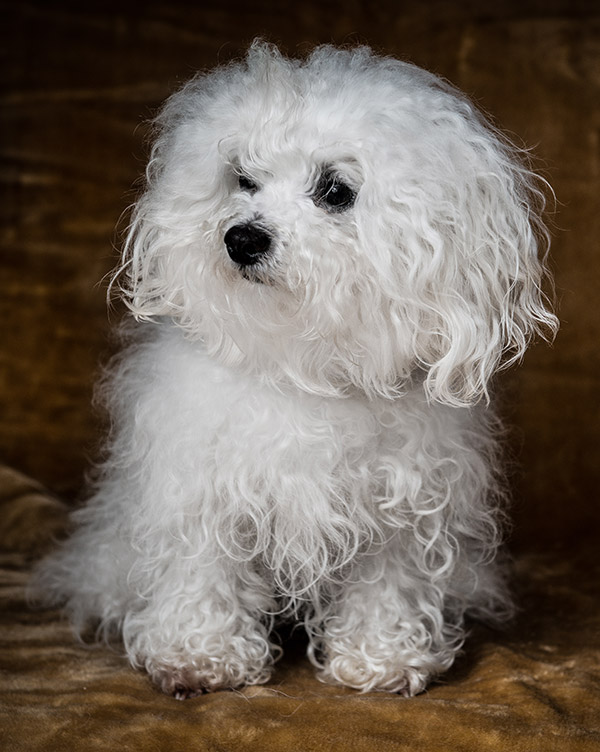
Basic Skills For Bolognese
I highly recommend any of Victoria Stillwell’s books or video clips. Teacher’s Pet is a series of short videos by Victoria that use her “Positively” method of training. You can view the full set from this page https://www.youtube.com/playlist?list=PL0C724F6F6A597540
A good first book is “It’s Me or the Dog” as it covers all the basics, is very easy to digest and has lots of lovely pictures. Ideally you will have bought and read this before you even choose a puppy! It’s never too late and there are plenty of tips and advice for adult dogs too.
Books bought and left to sit on a shelf don’t work very well though! You will have to read through and try things out. This is the part where you may find your dog picks things up much faster than you… and that’s ok. He won’t mind!
Think Dog
Victoria’s practical methods are constructed from the “think dog” approach so there are some great examples in her books. What is logical to a human is NOT logical to a canine. To help him to understand how to operate in a human world, it will help you to understand why he might do the things he does. There are many different opinions about dog psychology, but my favourite reads are Jan Fennel’s “The Dog Listener” and “Inside of a Dog: What dogs see smell and know” by Alexandra Horowitz.
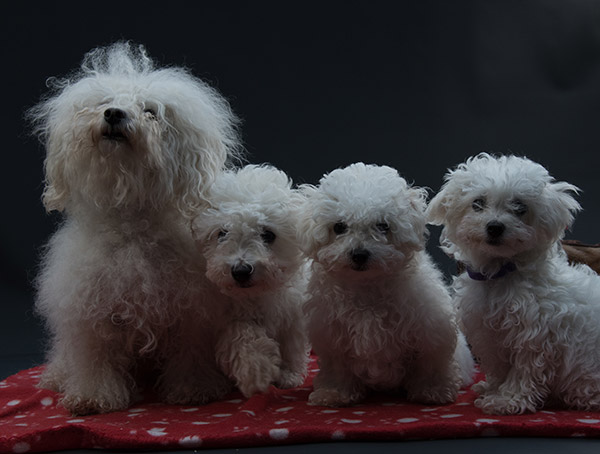
Rehoming and Rescue
Please contact Adele Summers who will have information on any Bolognese which are to be re-homed..
adelesummers1@gmail.com

